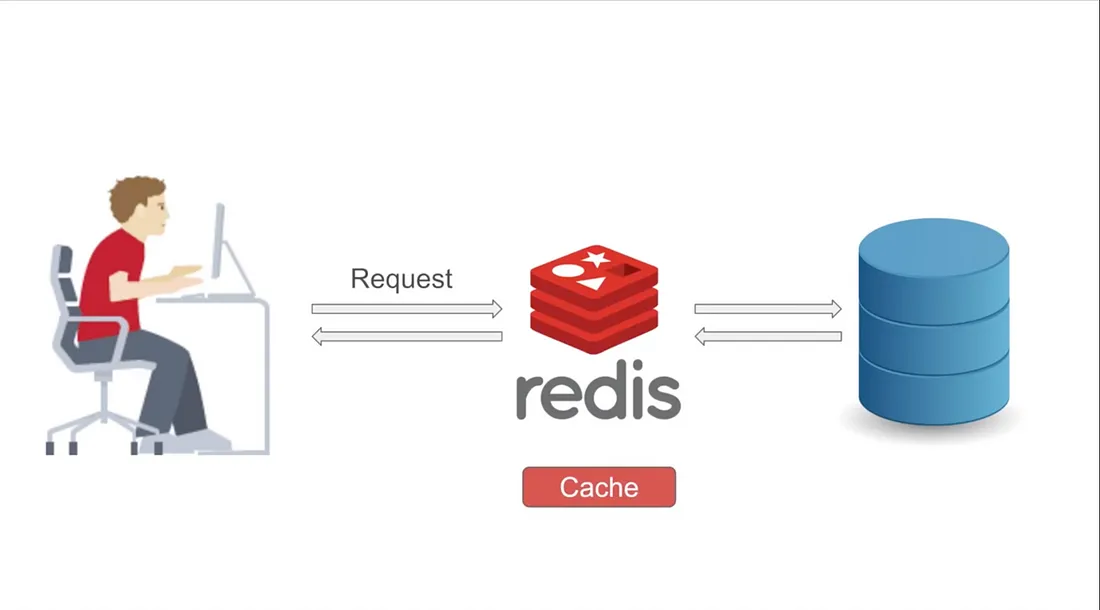Redis: Beyond Caching

Redis, the blazingly fast, open-source in-memory key-value database, is often pigeonholed as merely a caching layer. However, its capabilities extend far beyond that. Here’s a deep dive into Redis, exploring its potential as a primary database and addressing common misconceptions.
Redis: Beyond Caching
Redis at Work: A Real-World Example
In my role, we use a Redis cluster to cache HTTP responses from a third-party dependency. At peak times, it processes around 2 million requests per minute. While caching is a common use case, Redis is capable of much more. In fact, using it solely for caching underutilizes its potential.
Redis as a Primary Database: Common Concerns
There are two main reservations about using Redis as a primary data store:
- Ephemeral Nature: Being an in-memory database, it’s assumed that data in Redis is transient.
- Limited Data Structures: The perception that Redis, as a key-value store, cannot handle complex data structures or queries.
Let’s unpack these concerns.
Redis’s Data Persistence
Contrary to popular belief, Redis has built-in data persistence mechanisms:
- RDB (Snapshotting): This creates point-in-time snapshots of the dataset.
- AOF (Append Only File): Records every write operation received by the server. Upon restart, these operations are replayed to rebuild the database. This method ensures data durability and offers safety comparable to that provided by databases like Postgres.
Complex Data Structures in Redis
Redis is simpler than traditional databases but no less powerful. It closely aligns with computer science fundamentals like arrays, hash maps, and sets. This simplicity allows for the recreation of more complex data structures typically found in relational databases.
Case Study: User Authentication System
- Replicating SQL Tables: A simple user table with user ID and email can be recreated in Redis using key-value pairs, employing namespaces for logical grouping and clarity.
- Handling Complex Queries: Sequential scanning (akin to SQL databases) and index use can be replicated. For instance, creating a unique index for user emails in Redis mimics SQL’s index functionality.
- Storing Complex Data: Redis hashes allow storing detailed user information. They function like dictionaries, enabling the storage of complex data structures against a key.
Advanced Redis Features
- Sorted Sets for Ordering: Redis sorted sets can order users by login counts, offering functionalities similar to SQL ordering.
- Unique Constraints with Sets: Standard sets in Redis can ensure unique values, like usernames, providing a unique constraint mechanism.
- Transactional Integrity: Redis supports transactions, grouping operations atomically to prevent partial state inconsistencies. This feature is crucial for maintaining data integrity, especially in race conditions.
Why Redis Might Not Be Your Go-To
- Operational Overhead: Implementing features that databases provide out-of-the-box (like tables and indexes) requires significant effort in Redis.
- Cost of Memory Storage: Redis’s in-memory nature can be costlier, especially for larger datasets, due to the higher expense and limited availability of memory compared to disk storage.
Redis: A Versatile Choice
While Redis excels in speed and flexibility, it demands a nuanced approach when used as a primary database. For smaller datasets or applications where speed is crucial, Redis is an excellent choice. However, for quick setup with complex data structures, traditional databases like Postgres might be more suitable.
Personally, I often pair Redis with Postgres in my projects, using Redis as a caching layer. But I’m considering using Redis as the primary database in early stages of future projects, migrating to Postgres only when necessary.
Your Thoughts?
Has this exploration of Redis changed your perspective on its capabilities as a primary database? Are you already using Redis in this capacity, or are you considering it now? Share your thoughts and experiences!
FAQs
Q: Is Redis suitable for large-scale applications? A: Yes, Redis can handle large-scale applications, especially when used effectively for caching, quick data access, and handling real-time data. However, for large datasets, cost and memory considerations should be factored in.
Q: Can Redis replace a traditional SQL database? A: While Redis can replicate many functionalities of a SQL database, it may not entirely replace it, especially for applications requiring complex queries and data relationships. It’s often used in conjunction with SQL databases.
Q: How does Redis ensure data persistence? A: Redis uses two methods for data persistence: RDB (Snapshotting) and AOF (Append Only File). These methods ensure that data is not lost even when the database restarts or encounters issues.
Q: What are the best use cases for Redis? A: Redis excels in scenarios requiring high-speed data access, such as caching, session management, real-time analytics, and messaging systems.
Q: Is Redis’ performance affected when used as a primary database? A: Redis maintains high performance due to its in-memory nature, even when used as a primary database. However, the complexity of data structures and operations may influence performance, so it’s important to optimize its usage accordingly.
